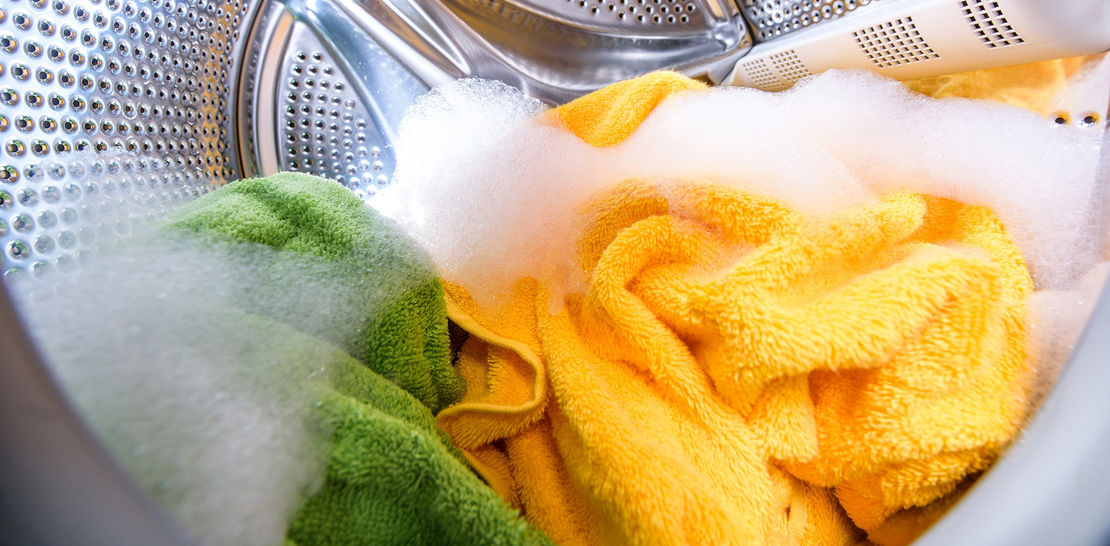
Did You Know?
Clean little helpers
Showering, washing clothes, cleaning house—all jobs that would be a lot harder without surfactants. Surfactants remove dirt and oils, while generating suds and making bath time fun. Evonik has developed biosurfactants that, in addition to delivering the full cleaning power of a surfactant, are also exceptionally well tolerated by the skin and the environment.
Say goodbye to stains: European households wash an average of 3.1 loads of laundry per week, and compounds known as surfactants make sure that clothing is really clean after the wash cycle. Surfactants are substances with detergent properties, whose molecular structure is what gives laundry detergents, shower gels, shampoos, and dish soaps their cleaning power. They can do this because they are amphiphilic, which means that they “love” oil as much as water. Thanks to that property, they can undermine stubborn dirt and loosen it from the surface of the material, after which it can be rinsed away with the water in your washing machine.
The problem, however, is that detergents often have to compromise their cleaning power to make them tolerated by the skin and the environment. This is where Evonik’s biosurfactants come into play: produced naturally by microorganisms, these surfactants combine performance, gentleness, and biodegradability to an unprecedented degree, and yet are based entirely on renewable resources—with no tropical oils. Researchers have known about these sophorolipids—a special type of biosurfactants—for decades, but have only recently been able to manufacture them on an industrial scale. In nature they are produced by yeasts and can be found in materials such as the honey made by bumblebees.
Another advantage: sophorolipids produce a great deal of foam, an important property in terms of how consumers perceive the performance of soaps and detergents. Long-lasting suds signal thorough cleaning, especially in emerging markets, where a good deal of laundry is still washed by hand, even as standards of hygiene are increasing.



